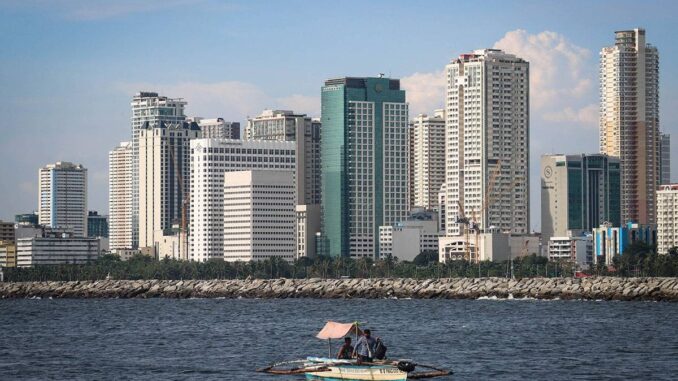
STRONG domestic demand supported by an improving policy and external environment could boost Philippine economic growth, the World Bank said.
“Strong growth will be driven by robust domestic demand, benefitting from more accommodative monetary policy and sustained public investment,” the Washington-based lender said in an October update of outlook for East Asia and the Pacific.
The World Bank raised its 2024 growth forecast for the Philippines to 6.0 percent, up from 5.8 percent previously, and that for next year to 6.1 percent from 5.9 percent.
Over 2024 to 2026, the growth outlook remains “favorable” at 6.0 percent.
The estimate for this year falls within the government’s 6.0- to 7.0–percent target, while that for 2025 is below the 6.5- to 7.5-percent goal.
First-half growth, the World Bank noted, showed that momentum had been sustained despite moderating household consumption.
Gross domestic product (GDP) was higher than expected at 6.3 percent in the second quarter, improving from 5.8 percent three months earlier and bringing the year-to-date average to the bottom end of the 2024 target.
“Private consumption will remain as the main growth engine, supported by steady remittance inflows, a healthy labor market and lower inflation,” the World Bank said.
“Improving investment activity will also support growth, as public investment will remain above 5.0 percent of GDP despite fiscal consolidation,” it added.
“[E]xternal demand will continue to firm up over the forecast horizon, as global growth gradually improves….”
The fiscal deficit, meanwhile, was projected to hit 4.6 percent of GDP by 2026, to be driven by spending efficiency gains and expenditure reductions.
Revenues, the World Bank said, will be supported by the passage of priority tax laws and higher dividend remittances from state-owned firms.
Labor market improvements and lower inflation are expected to boost household incomes, and the World Bank said that poverty was likely to continue declining.
It said that poverty incidence in the Philippines would fall to 13.6 percent this year from 17.8 percent in 2023 and hit 11.3 percent in 2026 using the $3.65 per day poverty line for lower-middle-income countries.
The latest poverty figures, however, are higher than the 12.2 percent (for 2024) and 9.3 percent (2026) in the April update.
Extreme weather continues to pose risks to the poverty picture, the World Bank said.
As for the overall Philippine growth outlook, it said that the risks remained tilted toward the downside.
Externally, these include a global economic slowdown and a weaker-than-expected expansion in China, while domestically food security could prove a challenge given persistent weakness in the agriculture sector.
“Future commodity price shocks caused by geopolitical conflicts, an increase in trade restrictions and climate-related disasters remain the main downside risks,” the World Bank said.
Lower inflation has allowed the Bangko Sentral ng Pilipinas (BSP) to begin easing policy but managing price pressures remains crucial, the World Bank also said.
Continued commodity imports will help control food inflation, it noted, especially as extreme weather is a threat to domestic supply. High rice prices due to El Niño were behind a rise in overall inflation earlier this year.
Inflation is expected to settle within the 2.0- to 4.0-percent target at 3.6 percent this year and further decline to 3.2 percent next year.
Consumer price growth, which breached the target range at 4.4 in July, markedly slowed 1.9 percent last month from 3.3 percent in August.
The September result — the lowest in over four years or since May 2020’s 1.6 percent — brought the year-to-date average to 3.4 percent.
The BSP kick-started an easing cycle in August, cutting its benchmark rate by 25 basis points (bps) to 6.25 percent. The central bank chief has indicated that two more cuts — possibly 25 bps each — could be announced during the last two policy meetings for 2024.
“Monetary policy easing in major economies, including the US, could help stabilize global growth and provide more space for monetary policy normalization domestically,” the World Bank said.
In the long term, it stressed that improving disaster management and agricultural productivity would help shield the economy from supply shocks, keeping inflation and interest rates low to support spending and investment.
“To maximize the impact of public spending, efficient budget execution will be crucial as the pace of public spending slows in line with the medium-term fiscal consolidation program,” the World Bank said.
“Sustained infrastructure and social spending will hinge on the government’s ability to raise new revenues and further structural reforms, particularly in the competition and regulatory space, will also be necessary to increase private investment and productivity,” it added.


Be the first to comment